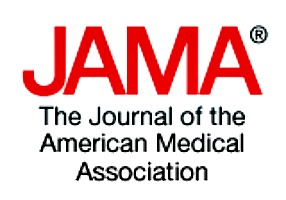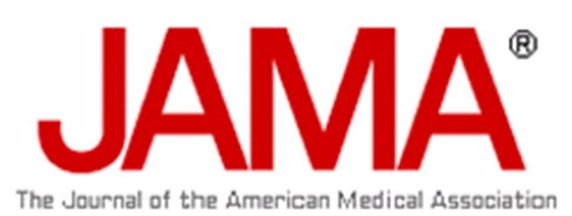 By 2014, 23 states and the District of Columbia had legalized medical marijuana use, suggesting a need for information about national rates of marijuana use for medical purposes.1 Although 17% of past-year marijuana users reported use for medical purposes in states with medical marijuana legalization,2 physicians might recommend medical marijuana use to patients regardless of their residing states.3Therefore, we examined differences between medical and nonmedical marijuana users across all US states.
By 2014, 23 states and the District of Columbia had legalized medical marijuana use, suggesting a need for information about national rates of marijuana use for medical purposes.1 Although 17% of past-year marijuana users reported use for medical purposes in states with medical marijuana legalization,2 physicians might recommend medical marijuana use to patients regardless of their residing states.3Therefore, we examined differences between medical and nonmedical marijuana users across all US states.
Data were from adults 18 years and older who participated in the 2013-2014 National Survey on Drug Use and Health (NSDUH), providing representative data on marijuana and other substance use among the US civilian, noninstitutionalized population.4 NSDUH data collection was approved by the institutional review board at RTI International. Verbal informed consent was received from each study participant. Data were collected by interviewers in personal visits, using audio computer-assisted self-administered interviews. The annual mean response rate for the 2013-2014 NSDUH was 59.3%.
In addition to sociodemographic and mental and physical health characteristics, NSDUH collected data on substance use and use disorders, age of onset for each specific substance used, perceived risk of harm from marijuana use, perceived legalization of medical marijuana use in residing state, and perceived marijuana availability. To classify medical marijuana use, those reporting past-year marijuana use were asked if any marijuana use was recommended by health care professionals and, if yes, whether all marijuana use was recommended.
We estimated the 12-month prevalence of medical marijuana use only, nonmedical marijuana use only, and combined medical and nonmedical use (combined use; 2-sided t test with a significance level of .05). We used multinomial logistic regressions to examine characteristics distinguishing the 3 groups. Our analyses used SUDAAN software (RTI International), version 11.0.1, to account for the complex sample design and sampling weights of NSDUH data.
Based on 96 100 respondents, 12.9% (95% CI, 12.6%-13.2%) of US adults had past-year marijuana use (nonmedical use only, 11.6% [95% CI, 11.3%-11.8%], medical use only, 0.8% [95% CI, 0.7%-0.9%], combined use, 0.5% [95% CI, 0.4%-0.5%]). Among past-year adult marijuana users, 90.2% (95% CI, 89.5%-91.0%) used nonmedically only, 6.2% (95% CI, 5.6%-6.9%) used medically only, and 3.6% (95% CI, 3.1%-4.0%) used medically and nonmedically. Of medical marijuana users, 78.8% (95% CI, 75.7%-81.9%) resided in states where medical marijuana was legal, and 21.2% (95% CI, 18.1%-24.3%) resided in other states.
Prevalence patterns among adults were similar across medical use only, nonmedical use only, and combined user groups with few exceptions (eTable in Supplement): compared with the West region, medical use only and combined use was less common in other regions, and nonmedical use only was more common in the Northeast. Medical use only was more common among those reporting fair or poor health than better health and among those with stroke; the opposite was found for nonmedical use only. Compared with full-time employed adults, nonmedical use only was less common and medical use only was more common among disabled adults.
Compared with nonmedical use only, medical use only was directly associated with older age, older marijuana initiation age, disability, Medicaid status, stroke diagnosis, poor self-rated health, anxiety disorder, daily or near daily marijuana use, residing in a medical marijuana legalization state, and perceived state legalization of medical marijuana, but was inversely associated with heavy alcohol use and nonmedical use of prescription stimulants and analgesics (Table).
Using nationally representative data, 9.8% of adult marijuana users in the United States reported use for medical purposes. Although the prevalence of medical use was higher in states that had legalized medical marijuana, 21.2% of medical marijuana users resided in states that had not, suggesting physicians might recommend medical marijuana use regardless of legalization.3
Similarities in correlates of medical and nonmedical users, especially co-occurrence with psychiatric conditions and other substance use, suggest that some marijuana users may access medical marijuana without medical need.5 However, medical-only marijuana users differed from nonmedical-only users in ways that are consistent with use to address medical problems.6 Limitations of this study include lower response rates compared with prior years, which increases the potential for nonresponse bias, and limited questions about medical marijuana use.
Corresponding Author: Wilson M. Compton, MD, MPE, National Institute on Drug Abuse, 6001 Executive Blvd, MSC 9589, Bethesda, MD 20892-9589 (wcompton@nida.nih.gov).
Published Online: December 19, 2016. doi:10.1001/jama.2016.18900
Author Contributions: Dr Han had full access to all of the data in the study and takes responsibility for the integrity of the data and the accuracy of the data analysis.
Concept and design: Compton, Han, Hughes, Jones.
Acquisition, analysis, or interpretation of data: All authors.
Drafting of the manuscript: Compton, Han.
Critical revision of the manuscript for important intellectual content: All authors.
Statistical analysis: Han, Hughes, Jones.
Administrative, technical, or material support: Han.
Supervision: Han.
Conflict of Interest Disclosures: All authors have completed and submitted the ICMJE Form for Disclosure of Potential Conflicts of Interest. Dr Compton reports ownership of stock in General Electric, 3M, and Pfizer. No other disclosures were reported.
Funding/Support: The National Survey on Drug Use and Health was supported by contracts from the Substance Abuse and Mental Health Services Administration. This study was jointly sponsored by the National Institute on Drug Abuse of the National Institutes of Health, the Substance Abuse and Mental Health Services Administration, and the Office of the Assistant Secretary for Planning and Evaluation of the US Department of Health and Human Services.
Role of the Funder/Sponsors: The sponsors supported the authors who were responsible for preparation, review, and approval of the manuscript and the decision to submit the manuscript for publication. The sponsors had no role in the design and conduct of the study; analysis and interpretation of the data; preparation and review of the manuscript; or decision to submit the manuscript for publication. The sponsors reviewed and approved the manuscript.
Disclaimer: The findings and conclusions of this study are those of the authors and do not necessarily reflect the views of the National Institute on Drug Abuse of the National Institutes of Health, the Substance Abuse and Mental Health Services Administration, or the US Department of Health and Human Services.


